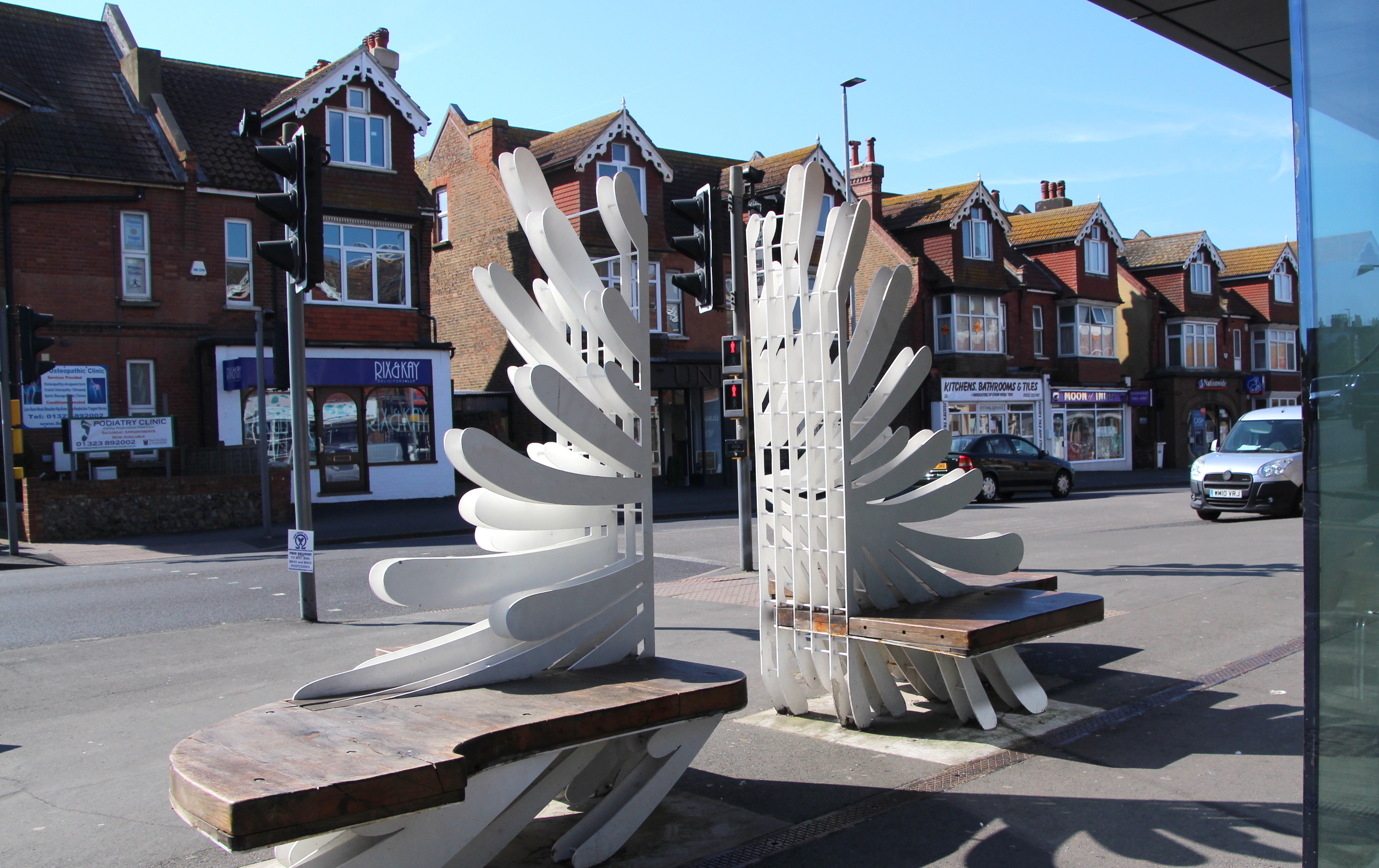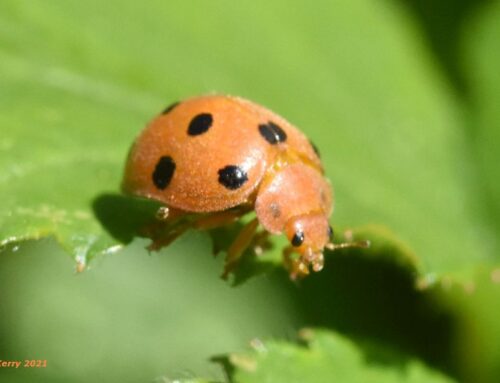It’s amazing what you can see from the bus stop. At least it is during June and July outside Seaford Library. Try sitting at the bus stop or the angel wings seat. If you listen carefully you will probably hear them first. Screaming as they swoop low at rooftop level, and then soar high up into the sky. Chasing and ducking, swifts are indeed very swift. Superb fliers, they do most things on the wing – feed, mate and even sleep. The one thing they can’t do is lay their eggs, and care for their young.
Swifts are in trouble and have declined 51% in the twenty years to 2015. The RSPB believe one of the reasons for the decline is the loss of nest sites. These migrant birds return from their wintering grounds in Africa to the same spot each year to breed – usually in buildings, in gaps under roof tiles and eaves. Swifts often return to discover that buildings have been knocked down, or gaps have been blocked up during renovation works.
In Seaford opposite the bus stop are a row of houses with gable roofs that are prime nesting sites. Once the young swifts have hatched, then you can spot the adult birds diving in and out of the roof tops, with beaks full of insects collected on the wing.
What can you do to help? The RSPB want to know about all sightings of swifts around their nest sites (or if you normally see swifts and have not).
If you know any new building developments, ask the contractors to put swift boxes or bricks into the buildings. If you are having work done to your house, make sure the nest sites are left intact. The Swift Conservation group can advise you further. If you’d like to know more there is a talk about swifts at the Booth Museum in Brighton on 21 June.
22-30 June is Swift Awareness Week. Make sure you catch a glimpse of these special birds, they’ll be flying back to Africa before you know it.
Judy







